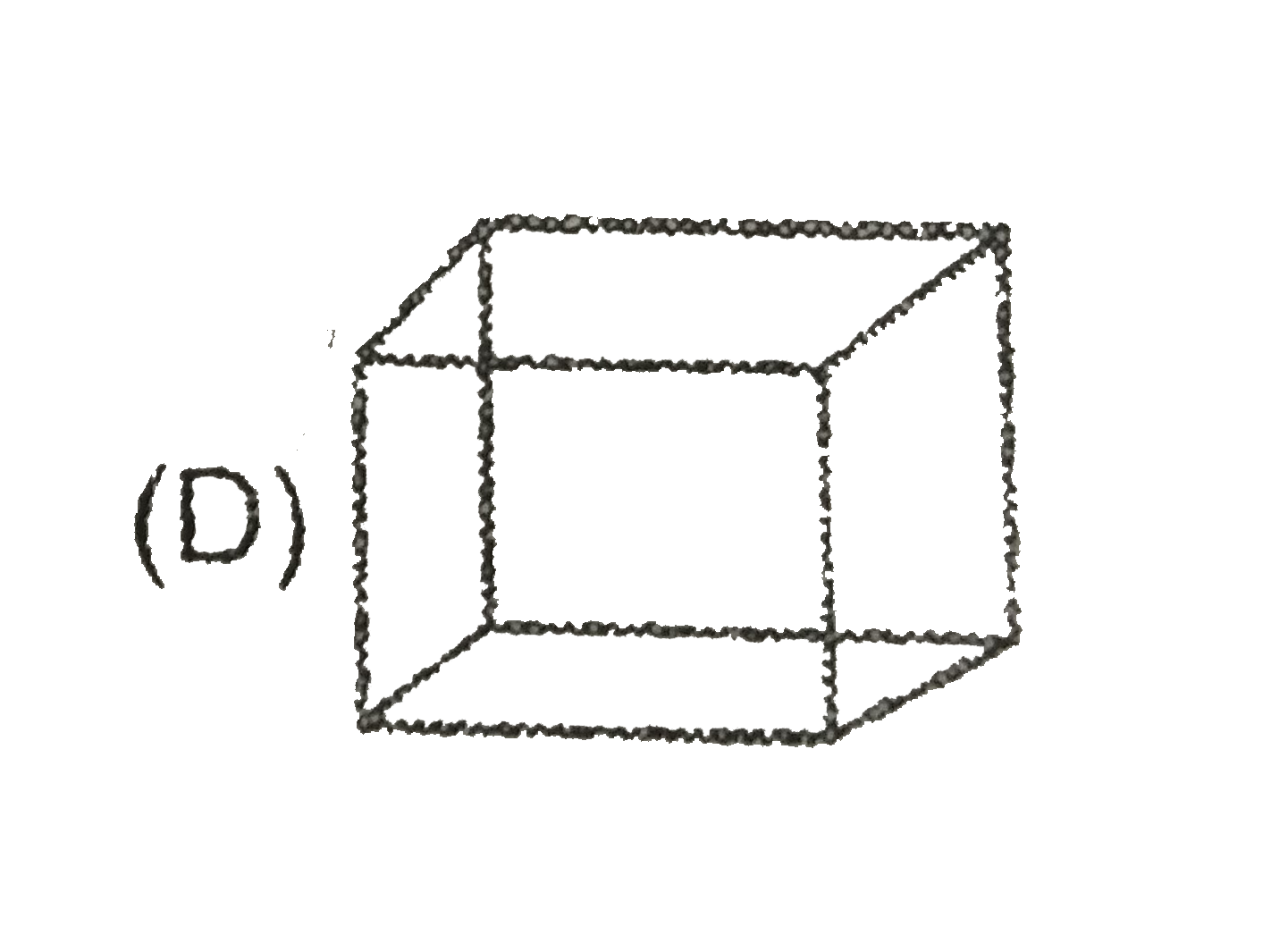A compound has the empirical formula C10H8Fe. A solution of 0.26 g of the compound in 11.2 g of benzene (C6H6)boils at 80.26∘C. The boiling point of benzene is 80.10∘C, theKb is 2.53∘C/molal. What is the molecules formula of the compound?
(a)C30H24Fe3
(b)C10H8Fe
(c)C5H4Fe
(d)C20H16Fe2
C30H24Fe3
C10H8Fe
C5H4Fe
C20H16Fe2
The correct Answer is:d
To determine the molecular formula of the compound with the empirical formula C10H8Fe, we will follow these steps:
Step 1: Calculate the change in boiling point (ΔT)
The change in boiling point can be calculated using the formula:
ΔT=T2−T1
Where:
- T2=80.26∘C (boiling point of the solution)
- T1=80.10∘C (boiling point of pure benzene)
Calculating ΔT:
ΔT=80.26−80.10=0.16∘C
Step 2: Use the boiling point elevation formula
The boiling point elevation can be expressed as:
ΔT=Kb×m
Where:
- Kb=2.53∘C/molal
- m is the molality of the solution.
Rearranging the formula to find molality:
m=ΔTKb=0.162.53≈0.0632mol/kg
Step 3: Calculate the number of moles of solute
Molality (m) is defined as:
m=number of moles of solutemass of solvent in kg
Given that the mass of benzene (solvent) is 11.2g or 0.0112kg:
0.0632=number of moles0.0112
Calculating the number of moles:
number of moles=0.0632×0.0112≈0.000707moles
Step 4: Calculate the molar mass of the compound
The molar mass can be calculated using the formula:
Molar mass=mass of solutenumber of moles
Given the mass of the compound is 0.26g:
Molar mass=0.260.000707≈367.5g/mol
Step 5: Calculate the molar mass of the empirical formula
The empirical formula is C10H8Fe. Now, we calculate its molar mass:
- Carbon (C): 12×10=120g/mol
- Hydrogen (H): 1×8=8g/mol
- Iron (Fe): 56g/mol
Adding these together:
Molar mass of C10H8Fe=120+8+56=184g/mol
Step 6: Determine the factor x
The relationship between the molecular formula and empirical formula is given by:
Molar mass=x×Molar mass of empirical formula
Substituting the values we have:
367.5=x×184
Solving for x:
x=367.5184≈2
Step 7: Determine the molecular formula
The molecular formula is given by:
Molecular formula=x×Empirical formula
Thus:
Molecular formula=2×C10H8Fe=C20H16Fe2
Conclusion
The molecular formula of the compound is C20H16Fe2.
Final Answer
(d) C20H16Fe2
---
The change in boiling point can be calculated using the formula:
ΔT=T2−T1
Where:
- T2=80.26∘C (boiling point of the solution)
- T1=80.10∘C (boiling point of pure benzene)
ΔT=80.26−80.10=0.16∘C
The boiling point elevation can be expressed as:
ΔT=Kb×m
Where:
- Kb=2.53∘C/molal
- m is the molality of the solution.
m=ΔTKb=0.162.53≈0.0632mol/kg
Molality (m) is defined as:
m=number of moles of solutemass of solvent in kg
Given that the mass of benzene (solvent) is 11.2g or 0.0112kg:
0.0632=number of moles0.0112
Calculating the number of moles:
number of moles=0.0632×0.0112≈0.000707moles
The molar mass can be calculated using the formula:
Molar mass=mass of solutenumber of moles
Given the mass of the compound is 0.26g:
Molar mass=0.260.000707≈367.5g/mol
The empirical formula is C10H8Fe. Now, we calculate its molar mass:
- Carbon (C): 12×10=120g/mol
- Hydrogen (H): 1×8=8g/mol
- Iron (Fe): 56g/mol
Molar mass of C10H8Fe=120+8+56=184g/mol
The relationship between the molecular formula and empirical formula is given by:
Molar mass=x×Molar mass of empirical formula
Substituting the values we have:
367.5=x×184
Solving for x:
x=367.5184≈2
The molecular formula is given by:
Molecular formula=x×Empirical formula
Thus:
Molecular formula=2×C10H8Fe=C20H16Fe2
The molecular formula of the compound is C20H16Fe2.
(d) C20H16Fe2
Topper's Solved these Questions
- DILUTE SOLUTIONBOOK - NARENDRA AWASTHI ENGLISHCHAPTER - DILUTE SOLUTIONEXERCISE - leval-02
26 Videos
- DILUTE SOLUTIONBOOK - NARENDRA AWASTHI ENGLISHCHAPTER - DILUTE SOLUTIONEXERCISE - leval-03
23 Videos
- CHEMICAL EQUILIBRIUMBOOK - NARENDRA AWASTHI ENGLISHCHAPTER - CHEMICAL EQUILIBRIUMEXERCISE - Match the column
1 Videos
- ELECTROCHEMISTRYBOOK - NARENDRA AWASTHI ENGLISHCHAPTER - ELECTROCHEMISTRYEXERCISE - Subjective problems
14 Videos
Similar Questions
The empirical formula of the compound is CH. Its molecular weight is 78. The molecular formula of the compound will be :
(a)C2H2
(b)C3H3
(c)C4H4
(d)C6H6
View SolutionThe freezing point of a solution of 2.40 g of biphenyl (C12H10) in 75.0 g of benzene (C6H6) is 4.40∘C. The normal freezing point of benzene is 5.50∘C. What is the molal freezing point constant (∘C/m) for benzene ?
View Solution
Knowledge Check
A compound X with the molecular formula , C3H8O can be oxidised to another compound Y whose molecular formula is C3H6O2. The compound X may be
Aprimary alcoholBsecondary alcoholCaldehydeDketoneA compound X with moleuclar formula C3H8O can be oxidized to a compoud Y with the molecular formula C3H6O2. X is most likely to be a:
ACH3CH2OCH3BCH3CH2CHOCCH3CH2CH2OHDCH3CHOHCH3
A compound X has a molecular formula of C5H10. Write down the empirical formula of X.
View SolutionWrite the empirical formula for each of the following:
C4H10
View SolutionFind DU of following compound:-
(a) C6H6O , (b)C6H5I , ( c)C6H6ClBrO , (d)C5H9N
View SolutionFind DU of following compound:-
(A)C8H12 , (B)C5H10 , ( C)C7H8 , (D)
View SolutionThe boiling point elevation contant for benzene is 2.57∘C/m. The boiling point of benzene is 81.0∘C. Determine the boiling point of a solution formed when 5g of C14H12 is dissolved I 15g fo benzene.
View SolutionSelect two homologous compounds from the following carbon compounds.
CH4OC2H6O2C2H6OC3H6O
View Solution
